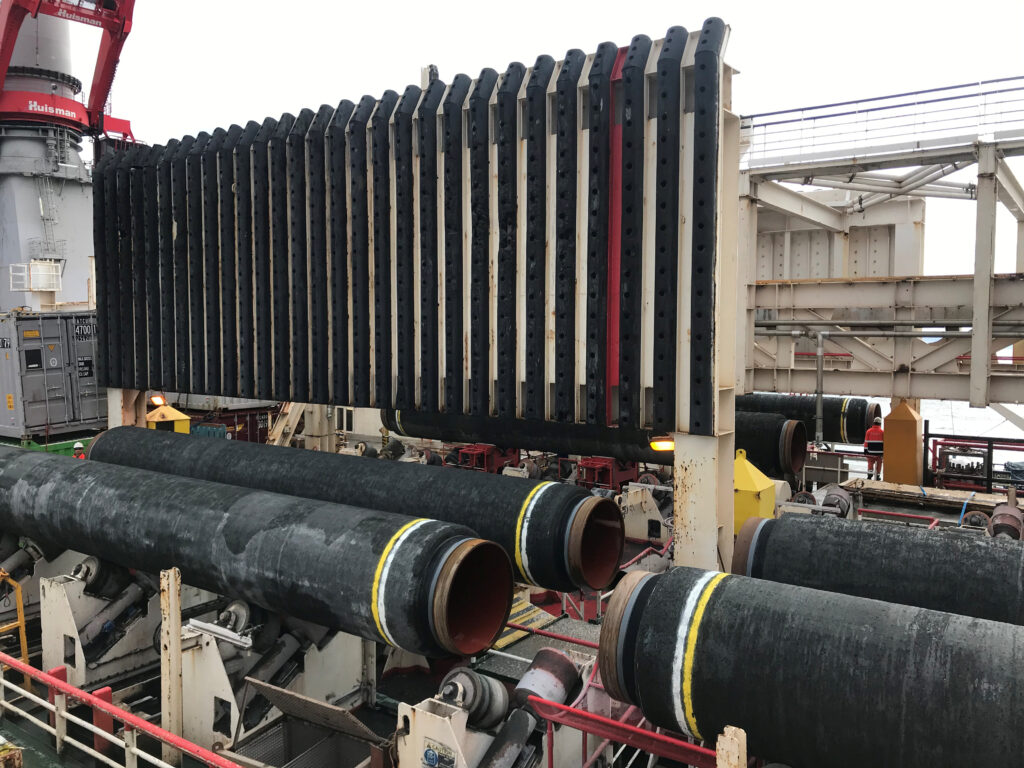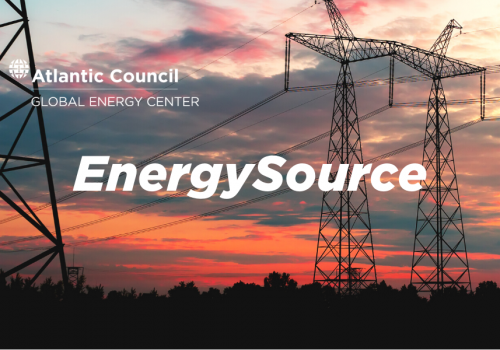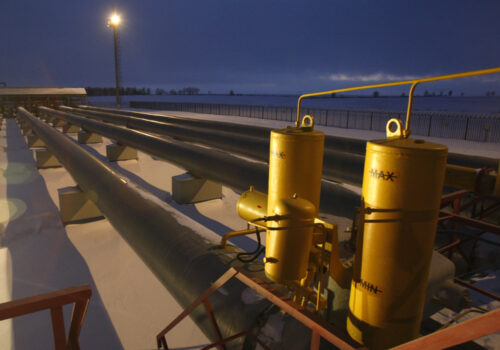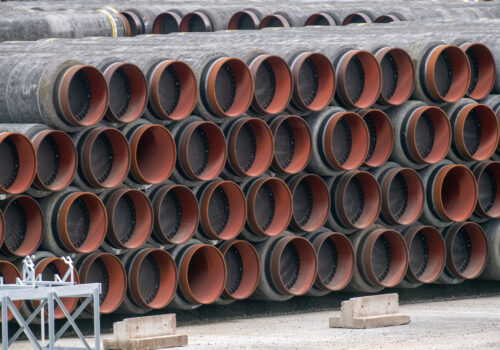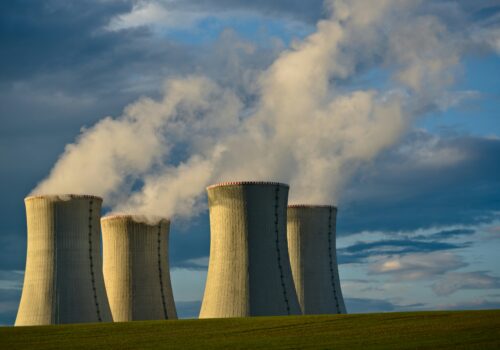Recently, Russian Foreign Minister Sergey Lavrov announced that Moscow is in discussions with Washington to bring the Nord Stream pipelines back into operation. But upon closer examination, such a reopening looks difficult to execute in practice.
There are first the legal barriers, particularly with respect to the Nord Stream 2 pipelines. The European Union (EU) Gas Directive of 2024 imposes a supply security test on non-EU asset owners—clearly a problem for Gazprom. However, US investors may be able to take advantage of EU rules to push forward their proposal for the acquisition of Nord Stream pipelines (possibly one, two or all the pipelines) arguing they are more likely to pass such a test than any Russian entity.
STAY CONNECTED
Sign up for PowerPlay, the Atlantic Council’s bimonthly newsletter keeping you up to date on all facets of the energy transition.
However, there is potentially a major second barrier: civil damages. A range of multibillion dollar claims against Gazprom are now underway because of its refusal to supply gas to its long-term customers during the energy crisis of 2021–22. There is not much point in investing in a pipeline if the gas or the revenues will then be seized by Gazprom’s former customers.
Furthermore, if Chinese tariffs on US liquefied natural gas (LNG) remain, US producers will likely want to keep Russian gas out of the EU market. This factor may weigh decisively on the Trump administration.
The Nord Stream Pipelines
The Nord Stream pipelines consist of two sets of pipelines, Nord Stream 1 and 2, which run along the seabed of the Baltic Sea. Prior to the full-scale invasion of Ukraine in February 2022, Nord Stream 1 was fully operational, while Nord Stream 2 was awaiting German and EU authorization. Each set in turn consist of two pipelines: Nord Stream 1A and B, and Nord Stream 2A and B. Each has a total annual capacity of approximately 27.5 billion cubic meters (bcm), amounting to 110 bcm in all—equal to two thirds of pre-2022 Russian gas exports to the EU.
Leading up to the full-scale invasion of Ukraine, Gazprom progressively cut the flow of gas to the EU via all pipeline routes—not just Nord Stream 1, but also the Yamal pipeline and Ukrainian transit routes. These supply cuts sent EU gas prices spiraling to over €340 per megawatt hour by August 2022, well over the 2009–19 range of €9–29. By early September 2022, no gas flowed through Nord Stream 1, and Nord Stream 2 remained unauthorized. Later that month, explosions ruptured three of the pipelines leaving only Nord Stream 2A intact.
The EU responded first by providing social protection for its consumers and businesses and funding gas purchases, principally from LNG providers. This cost the EU and member states approximately €500 billion. Subsequently, the EU significantly diversified its gas market, increasing pipeline supplies from Norway and LNG from the United States, Qatar, and even Russia. The EU plans to prohibit all Russian pipeline gas by April 2027. With the end of Russia’s Ukrainian transit contract in December 2024, the only Russian pipeline gas arriving in the EU is the 15 bcm which flows via the Turk Stream 2 pipeline principally to Hungary and non-EU Serbia.
Can Nord Stream restart?
The major US figure pushing for a restart is investment banker Stephen Lynch, who has focused particularly on the still-intact Nord Stream 2B pipeline. Lynch has also suggested that repairing the other NS2 pipeline would cost less than $700 million.
It is natural that one would start with the intact pipeline. However, the fundamental regulatory problem is that neither Nord Stream 2 pipeline has been authorized under German or EU law. The 2024 Gas Directive imposes two key requirements on pipeline owners. First, the owner must demonstrate that it is not also the supplier of the gas. Second, a non-EU owner person must show that certification will not risk the energy or overall security of any member state or the EU itself.
One can see how the Lynch proposal could work with the EU law provisions. A US-owned pipeline would be far more likely than Gazprom to obtain certification under the supply security test, given Gazprom’s behavior during the energy crisis. Furthermore, as the US investors would own the pipeline but not provide the gas, they would be able to pass the separation of ownership and supply test.
However, for such a proposal to work, the sale would need to be at full arm’s length—at market prices and with no Russian money or Russian state connections on the US side. The 2024 Gas Directive imports a very broad definition of control from the EU Merger Regulation. Any below-market-price transaction or Russian participation could raise the prospect of a legal challenge against the certification of the new non-EU owner—some EU member states would certainly launch a challenge if there were any suspicion of Russian involvement on the US side.
One also must ask whether Gazprom—which has never willingly sold one of its long-distance pipeline systems—would be prepared to do so now. Gazprom ran a half-decade campaign to get Nord Stream 2 authorized so it could run the pipeline, and it would be unprecedented for Gazprom to surrender it.
A further problem is that in response to the prospect of Nord Stream 2 restarting, the EU could seek to deauthorize Nord Stream 1, which was authorized under an older assessment regime which did not include the supply security test. As both Nord Stream 1 pipelines are ruptured and have not been repaired in over two years, the European Commission could propose amending legislation to the 2024 Gas Directive which could provide that any significant and lengthy rupture to a major piece of gas infrastructure would require the application of the supply security test.
Adopting such legislation would potentially strengthen US investors’ hands with Gazprom. It would mean the only way that Russian gas could flow through the pipelines would be if they were sold. However, Gazprom would probably be even more reluctant to surrender all of its pipelines to outside hands. Taking that position, however, would mean that Nord Stream 1 could never be revived.
The damages barrier
Perhaps the most formidable barrier to US investment in the Nord Stream pipelines is the fact that Gazprom would have difficulty selling its gas in the European Union, stemming from its behavior during the 2021–2022 energy crisis.
From spring 2021—presumably as a means to weaken Europeans’ resolve to assist Ukraine once the full-scale invasion got underway—Gazprom progressively cut gas flows to the EU. This started with a failure to respond to demand for more gas on the European spot market as COVID restrictions lifted. Then, Gazprom did not fill its own European-based gas storages and indeed drew from them as the winter heating season began. By early winter 2021–22, some of Gazprom’s EU storages were as little as 5 percent full.
Following the invasion in February 2022, Moscow went much further. In March, the Kremlin issued a presidential decree requiring all of Gazprom’s long-term customers to pay in rubles rather than in euros or dollars as per their contracts. Because it was difficult to be sure that payments would be cleared, many customers refused to pay in rubles. By May, Gazprom began systematically cutting off its long-term customers, starting with Poland in May and finishing with Italy in October. Over the summer, Gazprom progressively cut gas flows via Nord Stream 1, reducing supplies even for those continuing customers it was nominally still supplying.
This led to at least twenty long-term customers suing Gazprom. As these arbitration proceedings are private, it is not possible to know how many cases there are or the scale of their claims. However, it is known that Germany’s Uniper has been awarded €13 billion by the Stockholm Court of Arbitration, and that Austria’s OMV is pursuing several claims and has so far received awards amounting to €330 million. In addition, Poland’s Orlen has said publicly it has a claim outstanding for €1.45 billion.
The problem for Gazprom is that such awards create a major barrier to returning to the EU market. Gazprom will face seizures of its gas as it enters the EU market or more likely its customers payments will be seized to satisfy outstanding arbitration awards such as that handed down to Uniper.
However, it is not only the long-term customers of Gazprom who have claims. Gazprom was the dominant gas supplier in most of Central and Eastern Europe and parts of Western Europe. Given that refusal to supply is an antitrust abuse of dominance under EU law, and indirect purchasers (including energy-intensive industrial users) as well as consumers are able to bring claims, the potential scale of damages against Gazprom may be enormous.
With its long-term customers, Gazprom could potentially offer very cheap gas as a means of compensation. It could adopt a divide-and-conquer strategy by doing similar low-price compensation deals with high-volume users while seeking to contest consumer cases. The question remains however, as to whether the scale of compensation that Gazprom may have to pay undermines the economic case for entry to the EU market—and thereby the economic case for US investors to acquire one, two or all of the Nord Stream pipelines.
Chinese tariffs and US LNG interests
With the imposition of Chinese tariffs on US LNG, US gas shipments are already being redirected toward the European market. If the current tariff regime is sustained, then US producers will want to maximize access to alternative markets. This then raises the question as to whether the US government would be willing to support any Russian gas flows returning to the EU.
Potentially, Chinese tariffs may give Beijing greater incentive to finally consent to a version of the Power of Siberia 2 pipeline, which would, for the first time, bring natural gas from the Western Siberian gas fields—the main supply fields for the EU—to China.
If this ends up being the case, one can see the potential reshaping of global gas markets. Russia would increase its gas flows to China, while the United States—via long-term LNG contracts—would supply the EU market. In such a world there would only be a limited role—if any—for the Nord Stream pipelines. Given the formidable obstacles, restarting Nord Stream may simply be one pipe dream too far.
Alan Riley is a nonresident senior fellow at the Atlantic Council Global Energy Center and a Professor at the College of Europe, Natolin.
MEET THE AUTHOR
RELATED CONTENT
OUR WORK
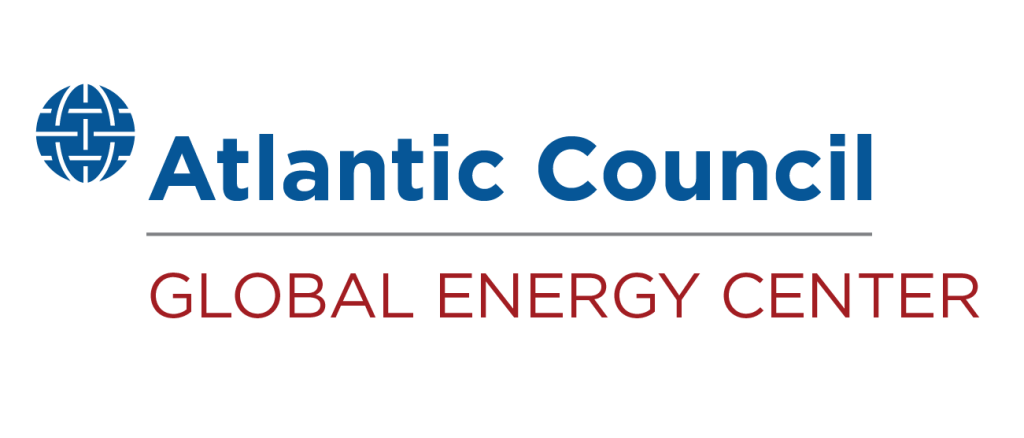
The Global Energy Center develops and promotes pragmatic and nonpartisan policy solutions designed to advance global energy security, enhance economic opportunity, and accelerate pathways to net-zero emissions.
Image: Pipes for Nord Stream 2 pipeline are seen onboard the Allseas' deep sea pipe laying ship Solitaire in the Baltic Sea September 13, 2019. REUTERS/Stine Jacobsen
